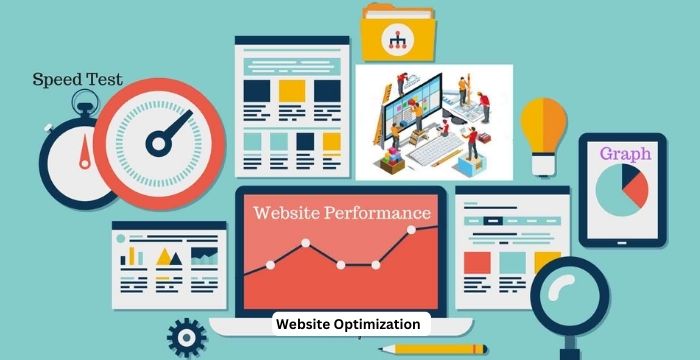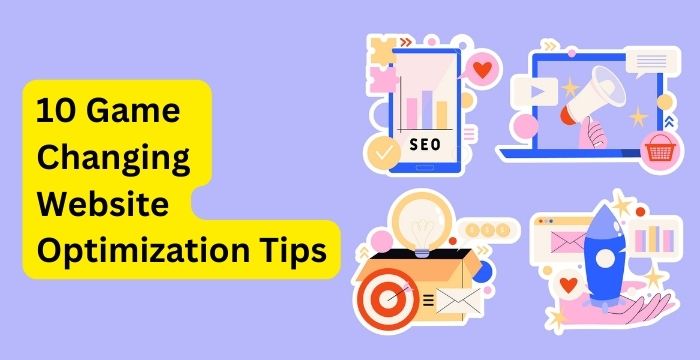Introduction To Website Optimization
Ever feel like your website isn’t getting the traffic it deserves? You’re not alone. Many website owners struggle with this issue. But the good news is, there are several game-changing optimization tips that can boost your traffic overnight. Let’s dive in and explore these strategies to transform your website into a traffic magnet.
Understanding Website Optimization
What is Website Optimization?
Website optimization is all about enhancing your website’s performance to achieve higher rankings, better user experience, and ultimately, more traffic. This involves a mix of technical tweaks, content improvements, and strategic planning.
Why Website Optimization Matters

Optimizing your website is crucial because it directly impacts how easily users can find and navigate your site. A well-optimized website not only attracts more visitors but also keeps them engaged, leading to higher conversion rates.
Improve Page Load Speed
Importance of Page Load Speed
Nobody likes a slow website. In fact, slow-loading pages can drive visitors away faster than anything else. Research shows that a delay of just one second in page load time can reduce conversions by 7%.
Tools to Measure Speed
To start, use tools like Google PageSpeed Insights, GTmetrix, or Pingdom to measure your current load speed. These tools provide detailed reports and actionable tips to speed up your site.
Techniques to Improve Speed
Minimize HTTP requests, use fast hosting, compress images, enable browser caching, and utilize a Content Delivery Network (CDN) to distribute content more efficiently.
Mobile Optimization
The Rise of Mobile Users
With over half of all internet traffic coming from mobile devices, optimizing for mobile is no longer optional—it’s essential.
Ensuring Mobile Responsiveness
Ensure your website is mobile-friendly by using responsive design, which automatically adjusts the layout based on the screen size. Test your site on various devices to ensure a smooth user experience across all platforms.
Optimize for Search Engines (SEO)
Keyword Research
Effective SEO starts with thorough keyword research. Use tools like Google Keyword Planner or Ahrefs to find relevant keywords that your target audience is searching for.
On-Page SEO Techniques
Incorporate these keywords naturally into your content, meta descriptions, and headers. Additionally, ensure your site is well-structured with clear URLs and proper use of H-tags.
High-Quality Content Creation
Importance of Content Quality
Content is king in the digital world. High-quality, engaging content keeps visitors on your site longer and encourages them to return.
Content Creation Tips
Focus on creating valuable, informative, and unique content. Use a mix of text, images, videos, and infographics to keep your audience engaged. Regularly update your blog with fresh content to keep it relevant.
Utilize Analytics and Data
Tracking User Behavior
Understanding how users interact with your site is key to making informed optimization decisions. Use tools like Google Analytics to track metrics such as bounce rate, average session duration, and page views.
Tools for Analytics
Beyond Google Analytics, consider tools like Hotjar for heatmaps and user recordings, or Crazy Egg for A/B testing insights. These tools provide a deeper understanding of user behavior and preferences.
Enhance User Experience (UX)
User-Friendly Navigation
A well-designed navigation system helps users find what they’re looking for quickly. Use clear, concise menus and a logical site structure to enhance usability.
Engaging Design Elements
Incorporate engaging design elements such as interactive buttons, animations, and high-quality images to make your site more appealing. Ensure these elements do not compromise load speed.
Social Media Integration
Leveraging Social Platforms
Social media can drive significant traffic to your website. Share your content on platforms like Facebook, Twitter, LinkedIn, and Instagram to reach a broader audience.
Social Sharing Buttons
Add social sharing buttons to your content to encourage visitors to share your posts. This increases your content’s reach and drives more traffic back to your site.
Implement A/B Testing
What is A/B Testing?
A/B testing involves comparing two versions of a webpage to see which one performs better. This method helps you understand what changes can lead to better user engagement and conversions.
Benefits of A/B Testing
By testing different headlines, images, call-to-action buttons, and other elements, you can optimize your site for maximum impact. Tools like Optimizely or VWO can help you conduct these tests effectively.
Secure Your Website
Importance of Website Security
A secure website not only protects your data but also builds trust with your visitors. Security breaches can have severe consequences, including loss of traffic and reputation.
SSL Certificates and HTTPS
Ensure your site uses HTTPS by installing an SSL certificate. This encrypts data and provides a secure connection, which is also favored by search engines.
Utilize Email Marketing
Building an Email List
Email marketing remains one of the most effective ways to drive traffic. Start by building an email list through sign-up forms and lead magnets like eBooks or exclusive content.
Effective Email Campaigns
Send regular newsletters with engaging content, updates, and promotions. Personalize your emails to make them more relevant to your audience, and include clear calls to action that direct recipients to your website.
Conclusion
Optimizing your website is not a one-time task but an ongoing process. By implementing these ten game-changing tips, you can significantly boost your traffic and improve user engagement. Remember, the digital landscape is constantly evolving, so stay updated with the latest trends and continuously refine your strategies.
FAQs (Frequently Asked Questions)
The most crucial aspect of website optimization is ensuring a seamless user experience (UX). This includes fast load times, mobile responsiveness, intuitive navigation, and high-quality content that meets users’ needs.
Regularly updating your website content is essential for maintaining relevance and engaging your audience. Aim to update your content at least every few months, and always update outdated information promptly.
Yes, website optimization can significantly improve your search engine ranking. By focusing on factors like SEO, page load speed, mobile-friendliness, and content quality, you can increase your visibility in search engine results pages (SERPs).
Google Analytics is widely regarded as one of the best tools for website analytics due to its comprehensive insights into user behavior, traffic sources, and more. Other effective tools include Hotjar for heatmaps and Crazy Egg for A/B testing.
Mobile optimization is crucial as a significant portion of internet users access websites via mobile devices. Optimizing for mobile ensures a better user experience, reduces bounce rates, and can lead to increased traffic and conversions.




